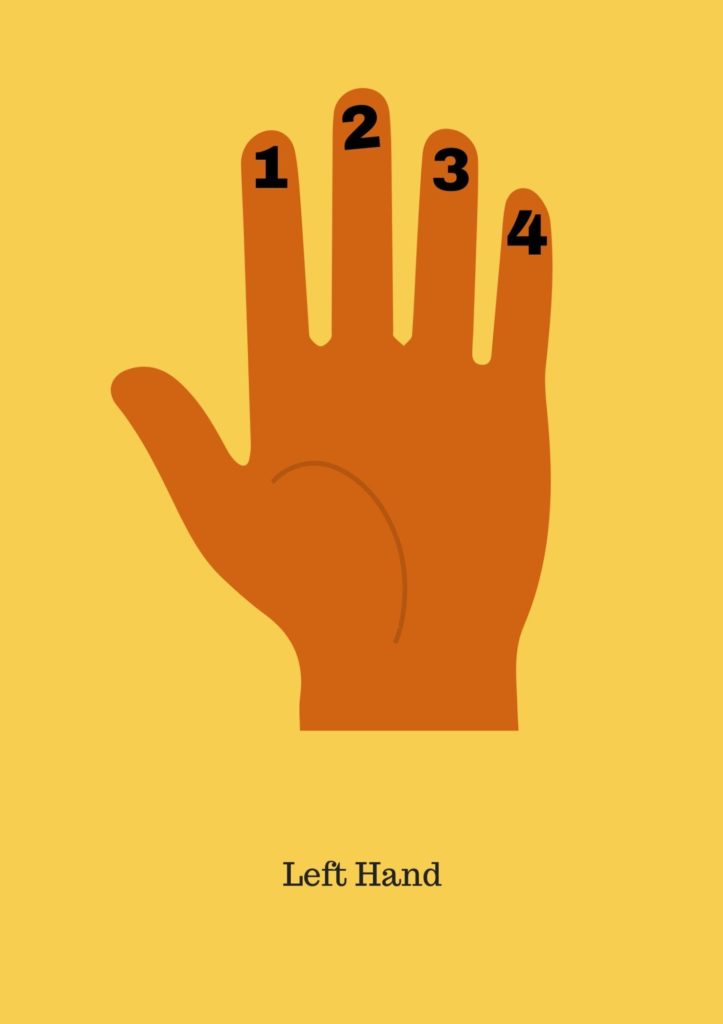
Chords – D & Dsus4
In this lesson, we encounter the D major chord and another flavour of this chord; Dsus4. The sus4 just tells us we have altered one of the notes in the chord, in this case, the F sharp becomes a G.
Take a listen to the Dsus4 chord….
This is what it looks like. You’ll notice that the 1st and 3rd fingers are on the same string. The 1st finger actually makes no real difference to the sound of the chord. However, you might find that feel more natural to place it there anyway.




Theory – Scales
A scale is a succession of notes ordered by pitch and can be ascending or descending.
A major scale is one of the most commonly used musical scales, especially in Western music. It consists of a series of eight notes consisting of whole and half steps.

There are many ways to play a major scale on a guitar. Going up one fret is a half-step. Going up two frets is a whole step. The diagram below does not show the best way to play it but is a good way to understand it.

Guitar Stands
Keeping your guitar out of the case on a stand means that you’re more likely to pick it up and play it. To save floor space or to keep it out of reach of small children/pets you can also hang it on a wall.
Eighth Notes
As we learned last week, a bar contains four quarter notes when we have a time signature of 4/4 (pronounced four-four). In the UK we call this a crotchet.
When we count in music, we repeat the numbers 1, 2, 3 & 4 coinciding with each beat of the bar.
4/4 <------------BAR ONE-----------><------------BAR TWO-----------> 1 2 3 4 1 2 3 4
If we want to have eight equal length notes in a bar, then we half the values and use eighths also referred to in the UK as a quaver.
Rather than counting up to eight, we say “and” in between each number; One and two and three and four and…
4/4 <------------BAR ONE-----------><------------BAR TWO-----------> 1 + 2 + 3 + 4 + 1 + 2 + 3 + 4 +
Right-hand technique
Here are two simple strumming patterns to get you started. In the first one, we start with two downstrokes on beats one & two. This is followed by downstrokes and upstrokes for beats three and four.
When you count, try saying “One, Two, Three and Four and…”

In the second one, we start with downstrokes and upstrokes for beats one & two. This is followed by downstrokes for beats three and four. When you count, try saying “One and Two and Three, Four… ”

Practice Track
Let’s now put together the four chords we’ve learned along with the strumming patterns.
| C G | D Em | C G | D Em | C G | D Em | Em |C G | D Em |


